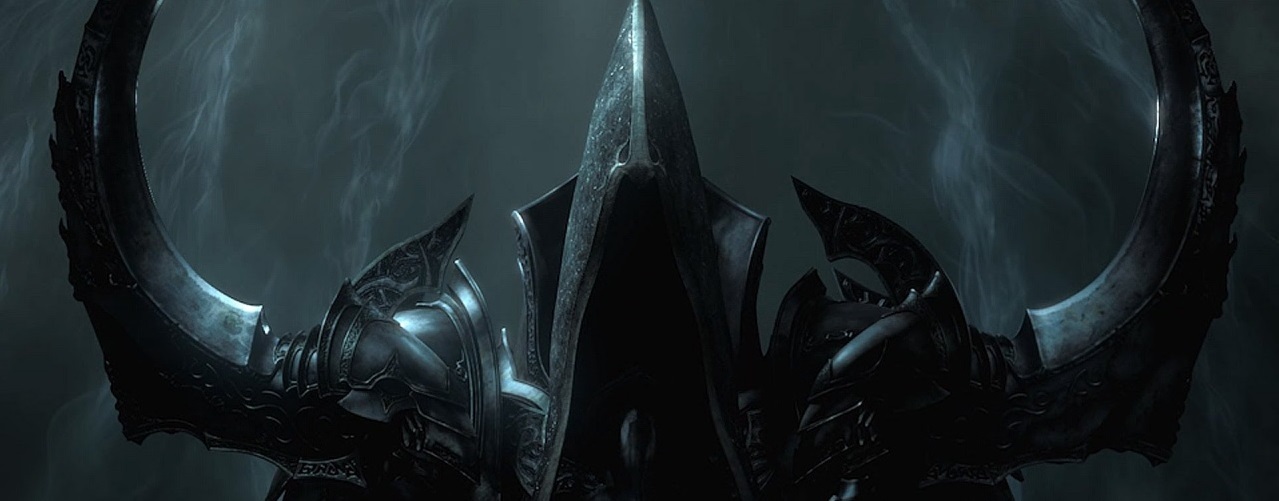Blizzard had a tough job on its hands if it wanted to satisfy fans left bitterly disappointed by Diablo 3.
Released in 2012 to scathing fan feedback, almost everything about the game found itself being torn apart and criticized. Blizzard is no stranger to over-zealous fans of course; if anything they’re known for having one of the most fervently dedicated player communities in the industry - but the scorn which was poured on Diablo 3 clearly left its mark. Reaper of Souls feels not so much like an expansion as it does a full-scale reworking from the ground-up - with a couple of minor exceptions, which we’ll go into later.
In terms of the core gameplay, we’re in familiar territory - you’ll still be spending your time clicking on monsters, choosing which skills and runes to use as your skillset, and you’ll still spend ages poring over and crafting new equipment. There have been some important changes though. Shortly before release, Blizzard rolled out a massive pre-patch, making sweeping changes to its loot system and the end-game leveling system. These systems, dubbed Loot 2.0 and Paragon 2.0, bring a far more satisfying approach to moment-to-moment gameplay. Whereas in Vanilla Diablo 3, you could often go for days at a time without picking up a legendary item (and even then it was likely to be of no use to your character), in Reaper of Souls it’s quite common to be receiving constant upgrades and those all-important Legendary items are now a much more frequent sight.
Paragon 2.0, meanwhile, brings back some of the character customization that was present in Diablo and its sequel, but absent from Diablo 3. With the level cap removed from this system, you can essentially continue leveling up your character indefinitely - and you’ll want to, as now each new level grants you a point to spend in one of four different skill trees. These points are persistent across all of the characters on your account, so although only characters that have reached the new level 70 cap can earn Paragon points, all other characters reap the benefits. After spending enough time playing as a Level 70 character, you’ll have invested enough points that it’s easy to feel immediately overpowered upon starting a new character.
Thankfully, Blizzard has also addressed this point. Gone is the old difficulty system, which meant that you needed to play through the game multiple times in order to unlock higher difficulties. Now, players can choose from Normal, Hard, Expert, Master and Torment (which Torment being sub-divided into an additional 5 toughness settings). Start as a new character with enough Paragon points, and you’ll want to scale up the difficulty in order for the game to present a challenge.
You’ll want to start a new character too, because the new playable class - the Crusader - is excellent. Feeling like a cross between the Barbarian from Diablo 3 and the Paladin from Diablo 2, the Crusader is essentially a walking battering ram. Armed with a shield and a melee weapon, you’ll quickly be charging through enemies, bashing them with your mighty shield, and exploding with divine wrath. The Crusader is immediately satisfying to play, with early skills which feel incredibly powerful. One of the first skills you receive allows you to charge forward across the playing field with your shield held out in front of you - only to reach your destination and send entire groups of enemies flying through the air. It won’t be long before you grow impatient to be confronted by hordes of enemies, simply so you can go charging into them. Some excellent soundwork conveys the full force of the Crusader’s righteous brutality, allowing you to appreciate every bone broken, and every enemy sent flying across the battlefield.
Start up the new campaign, Act V, and the first thing you’re likely to notice is just how dark everything is. While Diablo 3 was criticized by some for being rather colorful - at least compared to previous installments - Reaper of Souls is unlikely to suffer the same fate. Make no mistake, Reaper of Souls is dark, with a side-order of bleak, and then goes back for second and third helpings. The setting of Westmarch is replete with gothic architecture and dead bodies, while the sound of constant screaming acts as a backdrop to much of your time there. It’s fair to say that you wouldn’t want to take a holiday in the region. The oppressive atmosphere is maintained throughout; at times it can almost feel overwrought, but never quite crosses that line. Returning to the Acts from the original game - particularly Act II - shows just how much effort Blizzard has put into making sure that this expansion recaptures the darkness of previous games.
This bleakness isn’t just reflected in the visuals though. The game’s script is sombre throughout. There are still touches of levity - Covetous Shen is as amusing as ever, and some of the townsfolk in the new hub spout dialogue that will raise a wry smile (look out for the bickering rich couple); but this is a much meaner, darker take on Diablo 3. In addition, a doom-laden new soundtrack really drives home the atmosphere. Blizzard has always known how to craft atmospheric musical accompaniments, and with Reaper of Souls, they’ve delivered yet another excellent addition to their back-catalog.
Despite the excellent script, the story itself is a little threadbare, to be honest. An interesting premise shows early potential that’s never quite fully realized. Malthiel, the long-lost Archangel of Wisdom, has returned, newly christened as the Angel of Death. With a job title like that, it’s fairly obvious that he doesn’t come bearing flowers and chocolates; instead, he plans to use the Soulstone from the previous game to destroy all humanity. As always, there’s plenty of lore to be found lying around the world, fleshing out some of the backstory; and much of the dialogue is well-written, if rather heavy on exposition dumps. But the actual events of the story amount to little more than “here’s the bad guy, go and kill him”, with few interesting twists and turns. Such a sinister premise demands for a sinister story with a truly diabolical villain; but while his motives are diabolical, Malthiel himself is relegated to little more than the occasional cameo, simply popping up every now and then before muttering a couple of words and departing, as if to say “Hello! Remember me? I’m the guy you’re trying to kill”.
Act V is excellent throughout, and without being scientific about it, it certainly feels as though it’s the longest Act in the game. It took about 8-10 hours to complete, and a little more before reaching the new level cap of 70. While on occasion some areas feel as though they’ve been padded out a little - some of the areas you find yourself in are frequently huge - they all come with a bevy of new randomly-spawning Events. And thanks to the fact that all areas in the new Act are full randomized, there’s plenty of reason to keep going back time and again. It’s a slight disappointment that Blizzard hasn’t been willing or able to retroactively apply the new system to the original game’s quest however, which remains as overly-familiar as ever after a few runs through its environs.
After a gruelling final boss battle - Malthiel could more than give Diablo himself a run for his money in a match-up - you’ll have completed the campaign and move on to the new Adventure Mode. Adventure Mode is where you’ll be spending most of your time, so it’s a good thing that it’s damn good fun. Tasking you with returning to all areas - old and new - you take on a number of quests that require you to kill a certain amount of monsters in an area, kill a specific monster, or complete a certain event. Enemies in Adventure mode prove to be rather tough, and they attack in large numbers. The game seems to be a little too happy to spam you with ranged attackers - which can feel a little cheap - but bring some friends along for the ride and it’s an excellent way to kill some time. Breaking the game up into more manageable missions like this also means that you can enjoy it in bite-sized chunks, rather than feeling like you need to spend marathon sessions in order to make any progress - a fact that is undoubtedly helped along by the benefits of the new loot and Paragon system.
In addition to earning increased experience and more powerful loot, Adventure Mode also has you gathering Blood Shards, a new form of currency that can be spent at a merchant in exchange for a random gear item. Beyond the type of item you’ll receive, you have no way of knowing what you’ll get - it could be a Set item, a Legendary, or it could just be a lowly rare (which, despite the name, are incredibly common). Luckily, if you get an item that isn’t quite what you were hoping for, salvation arrives in the form of the Mystic.
The Mystic is a new artisan, and comes with a couple of uses. Most importantly, for a sum of gold you can ask her to re-roll a single attribute on an item of gear. Doing so presents you with a randomly-selected list of choices to set as a replacement. You can re-roll an attribute multiple times, but you can only ever re-roll the first one that you selected - you’ll never be able to turn a bit of Wizard gear with high intelligence and +5% bonus to Arcane Orbs into something worthy of a mighty Barbarian, for example. Still, it’s a neat addition to the game and comes in useful if you receive an item that isn’t quite what you wanted, but could be with a little tweaking.
The second use for the Mystic is Transmogrification - she can change the cosmetic appearance of most any item in your inventory. You can select the new styles from a list she provides - with more becoming available as you level up her abilities - and thus you can ensure that you always look as intimidating as you feel on the battlefield. It’s a small touch, but it helps players to stand out from each other once the game’s secrets have all been uncovered and people inevitably start settling on the use of certain Legendaries and character builds.
A truly excellent expansion, Reaper of Souls doesn’t seriously suffer from the minor problems with its storytelling, or the fact that not all of its environmental changes have been made retroactive. Slaying monsters in Westmarch is a consistently fun experience - particularly with friends, and the new Adventure mode provides plenty of longevity once you’re finished with the new campaign.
Reaper of Souls manages to fix the majority of the original game’s flaws, provides more than enough new gameplay to keep players going for a while, and fully justifies its price tag. If you played the original and didn’t like it - and there were many who didn’t - then you may well find yourself pleasantly surprised by this expansion. It’s still not quite the direct continuation of Diablo 2‘s famously addictive gameplay systems many wanted - and, no doubt will continue to demand - but it does an excellent job of finding an agreeable middle ground.




Pingback: New Job Listing Could Hint At Next Diablo 3 Expansion | Continue Play()